Rocco Commisso and US Soccer have a tumultuous relationship.
New York Cosmos Owner and Chairman Rocco Commisso recently spoke exclusively to World Soccer Talk about the state of the North American Soccer League (NASL) that his club plays in, which has been sanctioned as a second division by the United States Soccer Federation (USSF) since 2011. On September 1, 2017 at the USSF Board meeting that preceded the United States humiliating 2-0 World Cup Qualifying loss to Costa Rica at Red Bull Arena, NASL was denied a continuation at the Division 2 level for 2018 due to the league’s failure to meet the USSF’s Pro League Standards (PLS).
Following this denial of sanctioning, the NASL filed an anti-trust lawsuit against US Soccer alleging among other things a conspiracy from USSF and Major League Soccer (MLS) to weaken the league.
Behind the Scenes
Eric Wynalda, who is a candidate for USSF President, last month alleged that a conspiracy to weaken NASL had been undertaken at the direction of long-time USSF President Sunil Gulati. Wynalda is perceived as sympathetic to NASL, while Gulati has been largely seen as not only pro-MLS but someone who is willing to use the levers of power within US Soccer to protect the current top division in the US.
During the last several weeks, I have spoken on background to several figures who indicate that conscious efforts to weaken NASL took place at the board level due to the presence of owners who eventually left the league to join the MLS-affiliated USL while pursuing an MLS expansion franchise. Far more will be said on this at a date in the near future, specifically related to the exits of San Antonio and Tampa Bay from the league in 2015 and 2016 respectively.
Similarly questions have been raised about North Carolina FC Owner Steve Malik whose purchase of the team then known as the Carolina RailHawks in October 2015 and then his decision to stick with NASL despite courting from USL in late 2016 can be interpreted as having saved the league. However during 2017, the actions of Malik, who by this time had launched an expansion bid to join MLS and who had purchased a league in the USSF-subsidized and aligned National Women’s Soccer League (NWSL), have been questioned. Last month, Malik’s North Carolina FC formally switched leagues from the NASL to USL.
Rocco Commisso and US Soccer
Here are some highlights from our conversation with Commisso on these matters as well as my analysis of his comments:
“(In January 2017) no one on Steve Malik’s side was open to me about what might happen to me. That’s why I have this anger.”
While this might be fair, at the time Malik like other NASL owners and employees was likely desperate to get Commisso in the door and in control of the Cosmos who would have folded otherwise, leaving NASL in a precarious state with too few teams to compete and without its most marketable and recognizable brand. In fact, it could be argued that NASL as an independent league has no real need to exist if the Cosmos brand is not active. Additionally, if Commisso had failed to buy the Cosmos, it is entirely possible, perhaps even likely, that the league would not have been sanctioned to play in 2017.
It’s been a common theme that new owners in both NASL and USL often aren’t warned about the pitfalls of the lower league soccer business by league officials or other owners that are anxious to close the deal on sales. This having been said, Commisso deserves praise for coming into the ownership of the New York Cosmos and quickly retiring the numerous debts the previous club ownership had to players, staff and vendors. The Cosmos previous owners, the Saudi Arabian-funded Sela Sports group, had brought the reputation of the famous club into disrepute with non-payment issues as well as the treatment of players. Commisso quickly corrected course and steered the Cosmos ship forward once again.
Less than a week after the NASL was sanctioned for 2017 with Malik being the owner quoted in the press release, the NWSL team Western NY Flash relocated to the Raleigh/Durham market with Malik purchasing the club and rebranding it as the North Carolina Courage. At the end of that month, North Carolina FC formally applied to join MLS, a process that had begun with a press event in December. The following month, Malik moved North Carolina FC’s U-23 teams from NPSL, a largely NASL-aligned 4th division, to USL-owned PDL which operates at the same level. It should also be noted Malik’s North Carolina FC Academy teams play in the US Soccer Development Academy setup, which is owned and managed by the USSF.
In March, Malik was added to the USSF Board of Directors as one of only two representatives from professional leagues, the other being MLS Commissioner Don Garber. Commisso implies in the interview above (and sources who have spoken to us on background) that Garber was largely responsible for Malik’s appointment.
Commisso explains that 57% of the votes on the pro council are controlled by MLS. It’s worth noting that 30 of 53 professional clubs in the US that played competitively in 2017 are owned by MLS or its investor-operators so the ratio appears to be fair. But the NASL only has roughly 4% of the votes according to Commisso, despite 11% of the US-based professional clubs being owned by NASL owners.
Given the precarious nature of NASL’s current situation and sanctioning difficulties, expansion was critical. The NASL has had in both 2016 and 2017 first year clubs that have not been able to continue to a second season. Therefore the league put in more stringent vetting standards for potential new club owners. Commisso mentioned that investors gave presentations from the following markets: Atlanta, Fort Lauderdale, New Orleans, Detroit, Boston, Philadelphia, and Albuquerque. None of these applications were approved during the period of time Malik was on the Board of Directors.
Commisso meanwhile alleges Malik was negotiating independently with USL during the period when these presentations about potential new clubs were being given to the existing NASL owners.
The arrogance of the US Soccer Federation, something any objective person who has worked within the sport in the United States has seen, was also discussed by Commisso.
“I didn’t receive a ticket to the (USA-Costa Rica game at Red Bull Arena) despite being an owner of one of the three New York professional teams” (the match was on September 1, the same day as the NASL was denied D2 sanctioning for 2018). As an owner of a professional team who is in a USSF-member league, Commisso claims he’s never gotten a ticket to anything. Jacksonville Armada FC Owner Robert Palmer had to rent a suite at Red Bull Arena for that United States versus Costa Rica match. At the game, Steve Malik — who was a guest of US Soccer — never came by the Palmer suite to say hello or explain what had transpired at the USSF board level (Malik had recused himself from the vote on NASL’s sanctioning).
Commisso isn’t impressed by Malik recusing himself from the vote alleging he was at the same time working to enhance his own position.
“Look what he did to enhance his position with Don Garber. He went out and screwed us, it’s as simple as that,” said Commisso in the interview.
The description of the timeline from Commisso is telling if it is in fact accurate as to why views of Malik within NASL circles are so toxic. The Cosmos owner’s claimed that the NASL board was not notified of North Carolina’s departure from the league until September 29 but that Malik had indicated to US Soccer before its September 1 decision regarding NASL’s sanctioning that his team would in fact be jumping to the rival USL.
The tone from Commisso indicates he believes the powers-that-be in MLS and USSF want to drive him personally out of business. While it is without question that Commisso’s hard-charging drive and personality has rankled people in the game, it’s probably less about him and more about the team he owns.
The New York Cosmos represent a unique brand in the annals of American soccer lore. Representing the biggest market in the country and having brought countless people into soccer fandom in the 1970’s and 1980’s, the Cosmos legacy persists around the globe to this day.
The MLS model of soccer which has been advocated by the leadership of the USSF under Sunil Gulati is one that tightly controls narratives and investment while ignoring or even ridiculing the pre-1990 history of the sport in this country. The Cosmos represent something very different – a brand that connects with fans across the globe and evokes memories of a time when some of the biggest names in the world of club soccer played in the New York area and across North America.
Routine World Cup qualification and victories in the CONCACAF Gold Cup, which is always held on American soil, for the United States has been the currency by which the powers-that-be in the game have used to control the system and narrative. But in the post-Trinidad debacle world of American soccer, voices of dissent like Commisso and Wynalda have a greater platform and increased credibility.
200+ Channels With Sports & News
- Starting price: $33/mo. for fubo Latino Package
- Watch Premier League, World Cup, Euro 2024 & more
Live & On Demand TV Streaming
- Price: $35/mo. for Sling Blue
- Watch Premier League, World Cup & MLS
Many Sports & ESPN Originals
- Price: $9.99/mo. (or get ESPN+, Hulu & Disney+ for $13.99/mo.)
- Features Bundesliga, LaLiga, Championship, & more
2,000+ soccer games per year
- Price: $4.99/mo
- Features Champions League, Serie A, Europa League & NWSL
175 Premier League Games & PL TV
- Starting price: $4.99/mo. for Peacock Premium
- Watch 175 exclusive EPL games per season
110+ channels, live & on-demand
- Price: $59.95/mo. for Plus Package
- Includes FOX, FS1, ESPN, TUDN & more

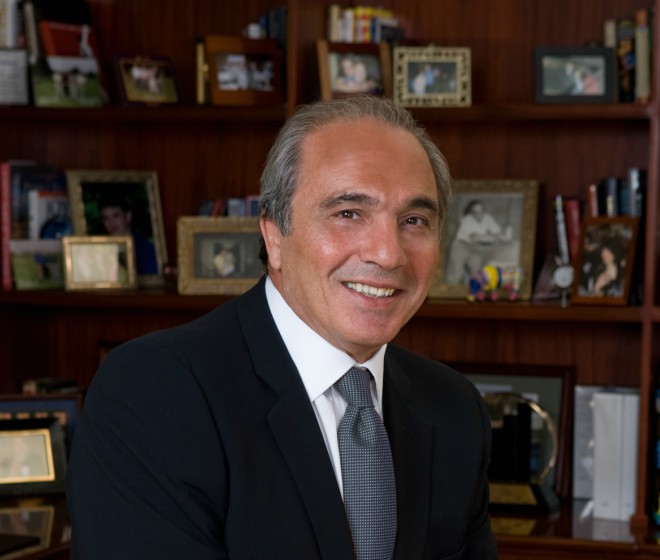














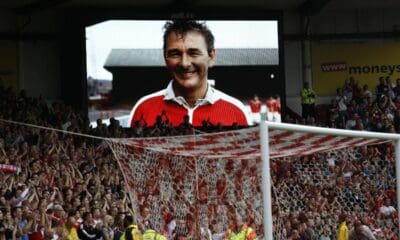

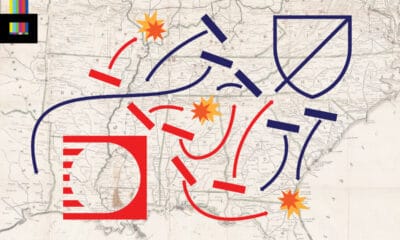

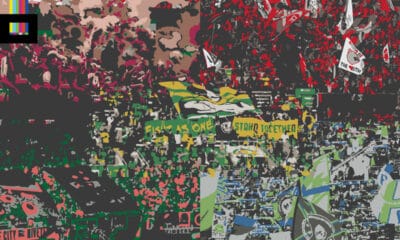

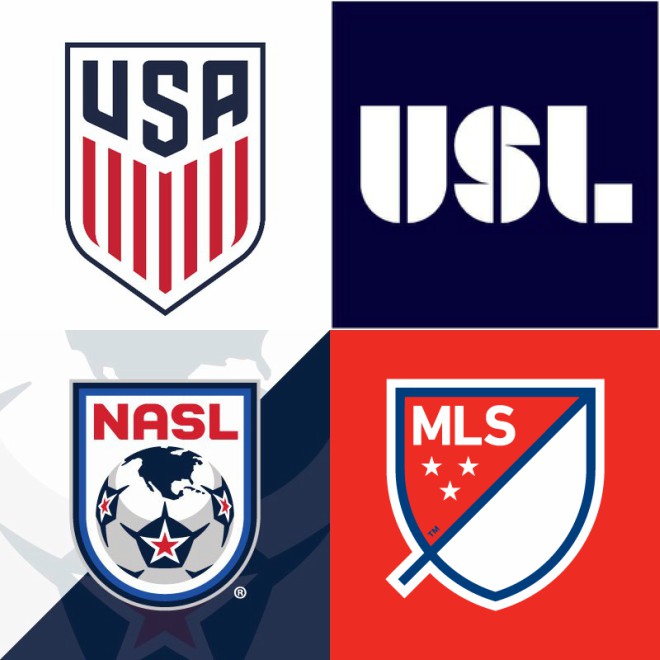
Ridge Mahoney (Soccer America)
December 7, 2017 at 9:30 pm
Yes the Cosmos have an important place in US soccer history.
And so do the Rowdies,the Sounders, the Whitecaps, the Timbers and the Earthquakes, among others, and many are in MLS or USL, so whatever the author believes of pre-1990 exclusion is flat out wrong. From day one the Cosmos have fought MLS and also whined about being shut out. What a joke.
And nobody is better at character assassination than Commisso and his cronies, who have added Steve Malik to the witch hunt of Garber, Gulati, et al. MLS is fielding expansion requests left and right, it has zero need to “entice” teams from NASL or any other league.
Maybe Malik read the writing on the wall. It doesn’t take much financial acumen to see what league knows what it’s doing and which doesn’t.
Wrong Said Fred
December 7, 2017 at 6:40 pm
Can somebody offer a more nuanced view of NASL? This author is biased to the point of fawning here.
This is not a knock on the author. You are allowed to like what you like, and you obviously have ties to the organization. Having said that, there is a reason the league has failed to catch fire and the reason is most certainly not 100% related to evil USSF holding them down.
Carolyn
December 8, 2017 at 6:53 am
I’ll try, but I’ll state upfront that I’m pro-NASL, and anti-USL/MLS/US Soccer, just so you know my leanings. I cannot guarantee to put that entirely aside but will do my best to address facts without bias. Also understand my timeline may be a little wonky as I’m writing from memory.
There are two major factors that have prevented the NASL from “catching fire” as you put it.
USL/MLS/US Soccer is one. The NASL itself is the other. I’ll address this second point first.
The current NASL itself was made up several teams that split off from the USL (which gives you some idea of where the USL animus comes in) and sought US Soccer D2 sanctioning. US Soccer provisionally agreed to provide that, as long as certain conditions were met. You might argue that those conditions were too hard to meet (X number of teams in so many years), but they were agreed to.
Unfortunately, one of the ways that the NASL sought to meet that agreement was to get into bed with some shady characters, in the name of Traffic Sports. At one point Traffic owned the majority of three teams in the league: Atlanta Silverbacks, Fort Lauderdale Strikers, and Carolina Railhawks.
This was fine for a while, but then US Soccer decided that no one could own majority share of more than one team in one league. At approximately the same time as the NASL was scrambling to find new owners for at least two of the teams, FIFA scandals broke and a whole bunch of folks from Traffic were indicted/plead guilty. This further destabilized the league, and gave them less time and leverage to find owners (keeping in mind that contracting was going to hurt their minimum number of teams rule for D2 sanctioning). Throw into that that the Commisionor at the time was a Traffic pick, the incompetent blowhard who managed to run NFL Europe into the ground as his previous job and you have a perfect storm of incompetence and corruption that ruins many businesses.
Running in parallel with this, MLS made an offer to the NASL to “partner” with them and was refused. The same offer was made to the USL and accepted. This was to, in essence, become a farm league for the MLS, accepting and giving playing time to MLS prospects. From a business perspective, it would have made sense for the NASL to accept the offer, although there would have been a definite diminshment in the quality of soccer, and the NASL would have lost a certain amount of autonomy.
NASL, led by the incompetent blowhard, Peterson, decided to go one further and antagonize MLS by seeking D1 status, as a way to paper over the fact that they were tenuously holding on to D2, and had to continually seek waivers (to be fair, US Soccer kept moving those markers, re-defining what it needed to hold on to D2 in such a way as to continuously disqualify the NASL).
In the meanwhile, teams folded. Teams were sold to not properly vetted owners (the Fort Lauderdale Strikers owners didn’t make payroll most of the 2016 season, for example). Other teams were started up (had to meet the minimum) without proper financing in poor locations (Rayo OKC is one example of this. One of the owners absconded in the dead of night with his half of the artificial turf. Not making that up).
At the same time, USL was financially strengthened by its MLS partnership (USL had shown much of the same instability as NASL, in case you were wondering) and a lot of new teams were added. Many of these teams were actually drawn from the NASL with the promise that it would strengthen the path to MLS team ownership (San Antonio Scorpions, Tampa Bay Rowdies, and yes, Carolina Railhawks/NCFC). These are most likely unscrupulous lies as well, which is why San Antonio is suing MLS. But it’s hard to feel sorry for a bunch of arrogant billionaires, especially Rowdies owner Bill Edwards, who did everything he could on the way out to destroy the league so he didn’t have to pay the exit fee.
Even the weather was against the NASL, with Hurricane Maria destroying Puerto Rico, and forcing Puerto Rico FC to play their remaining home games at basically pickup fields in Eastern Florida.
Now we come to US Soccer, and their villainy. US Soccer has several reasons to dislike the NASL. First and foremost, most of US Soccer is made up of MLS owners. Keeping in mind that MLS is a closed system (all player contracts are owned by MLS, not by the individual teams, and MLS decides who gets to sign the big stars through their designated player system), while NASL has no salary cap and players sign with individual teams, the success of the NASL would hurt their bottom lines, since MLS salaries are actually quite low compared to most major leagues around the world. Basically, a successful NASL would drive up player salaries because they’d have other options if they wanted to play in the US, good paying options.
Now remember that the MLS has invested in the USL, and that the USL has a grudge as well as aspirations to be D2. And you see where US Soccer has moved goal posts and threatened NASL status, while USL has poached teams with empty promises, and you start to see a system that’s stacked against the NASL. When you see that it’s your major competitors sitting on the board of US Soccer, making decisions that will most likely destroy your business, and your investments, then yeah, you’re going to cry foul.
So, having said all that, you might wonder why I identify as an NASL fan? Simply put, there’s more personality in NASL Soccer, and more room for innovation. I don’t like the closed system which keeps player salaries low. I despise the MLS belief that since they are the only game in town we should just give them our money, even though the Soccer is mediocre at best. Soccer should be quirky and stylish. It’s not called the beautiful game for nothing. And the closest I’ve seen to that in the US has been played in the NASL, under coaches like Gunter Kronsteiner (Strikers), Gerard Nus (Rayo OKC), Gio Savarese (Cosmos), and Alessandro Nesta (Miami FC).
Kartik Krishnaiyer
December 8, 2017 at 3:18 pm
I actually went on record in this same publication just a few short months ago saying NASL was largely to blame for its own demise but also stated USSF has taken little interest in facilitating change. That having been said two intervening events have taken place.
1- USMNT missing the World Cup
2- Columbus fiasco
The implications of these two events are beyond massive.
If those two events taken in context don’t shake you up, I don’t know what will.
Carolyn
December 8, 2017 at 6:48 pm
Absolutely. Let’s just hope it leads to actual change.
Thomas
December 6, 2017 at 12:31 pm
Interesting article. It’s off the article topic, but on the topic of the WST, but what is the TV coverage for the FIFA World Club Cup. I actually like this tournament, the small size is manageable, it is fun to see new clubs and stadium scenary, and there is not much competition this time of year- European leagues are mid season, the MLS Cup final is often good, but it’s only one game, etc…
Christopher Harris
December 6, 2017 at 3:49 pm
Here’s the TV schedule for the FIFA Club World Cup https://worldsoccertalk-wp.futbolsites.dev/2017/12/05/fifa-club-world-cup-tv-schedule-viewers-united-states/
Thomas
December 6, 2017 at 5:24 pm
I remember now; I’d forgotten. Disappointing it’s all in Spanish only, but I am glad its on.
uday kumar
December 5, 2017 at 2:27 pm
This is a sad story. I just hope there is way forward with reconciliation between NASL, MLS, and USSF.
Pro-Rel needs to happen, but we need to plan a smooth transition to protect all soccer investments.
Look forward to a happy ending.
Uday
Mark Schnabel
December 6, 2017 at 5:54 pm
Pro-Rel will happen once the MLS reaches between 36 to 40 teams. Then there will be an MLS Championship and an MLS Premier.
If the USL and NASL could play together in the same sand box without fighting, there would be the next place where Pro-Rel could be tried.
The problem with Pro-Rel between the MLS and other leagues in the US is two-fold, First if an MLS team is relegated, the owners have no incentive not to just fold the team and walk away. The valuation of the club would crash. It would retain little, if any value. The NASL has said as much in its appeal not to be dropped to the third division.
The second problem is there are only a handful of current USL owners (and even fewer NASL owners) with the means of operating their clubs successfully at the MLS level. They would have to find (or build) a stadium that can sufficiently allow them to compete at the MLS level. They would have to dump their roster and go out and buy players on the open transfer market to have the level of talent to compete over a 30-plus game season. All of their costs would go up exponentially.
US sports is based on the franchise model and not the European social club model. US teams have always been operated as a business. They are judges not by wins and losses, but by valuation, which is based on revenue stream and market size.
European teams started as true neighborhood social clubs. Many even (and some still do) operate basketball, hockey, track and even gymnastics squads (the difference between an AC and an FC).
Below the top levels, many still operate in that manner. In the 1880s and 1890s, when many of these teams formed, Pro-rel made sense as a fair way for these social clubs to operate.
The actual change is that top-level European teams are going to start working to limit pro-rel in the top level leagues (there has already been talk about doing it in the English Premier League). As many of these teams have gotten away from the social club model and into the business model (with actual owners and ownership groups, see Liverpool, Man U, Man City, etc.) These owners want to protect their investment’s valuations.
Now, while the US has never had a formal pro-rel system, we have always had pro-rel in most of our sports. It has been at the player level and not at the league level.
I will use baseball as the example. A player starts in Rookie League or Short-Season Class A. If he is successful, he goes to Class A, followed by Class A advanced, Class AA (where most prospects are put), Class AAA (the majors’ junior varsity) and finally to the Majors. If a player fails to perform, he gets sent down, if not outright cut.